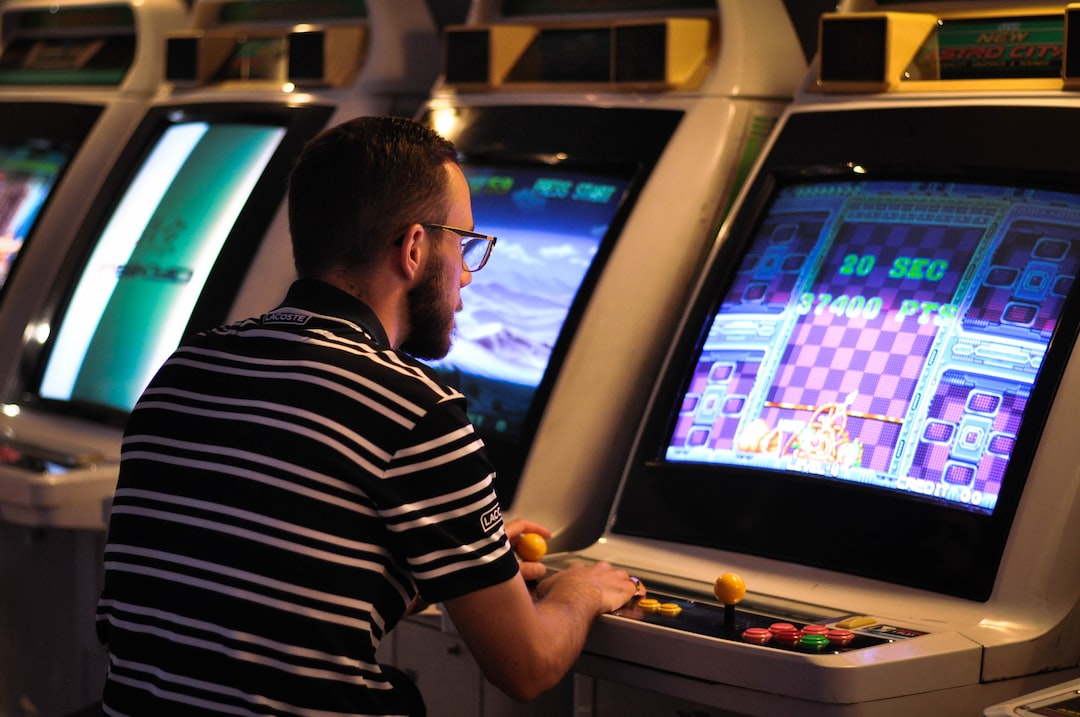Exploring the World of Virtual Reality Gaming: Immersive Experiences at Your Fingertips
Over the past decade, virtual reality (VR) gaming has made incredible strides, revolutionizing the way we interact with and experience video games. Once just a distant futuristic concept, VR has become increasingly accessible, providing gamers with exhilarating and immersive experiences right from the comfort of their own homes. In this blog post, we will explore the world of virtual reality gaming, delving into the technology behind it and the amazing experiences it offers.
Virtual reality gaming involves the use of a headset, which is worn over the eyes, and motion-tracking controllers. The headset displays a 3D computer-generated environment, while the motion-tracking controllers allow users to interact with the virtual world. This combination of visuals and physical interaction simulates a sense of presence, making users feel as if they are actually inside the game.
One of the most popular VR headsets in the market is the Oculus Rift. Developed by Oculus VR, a subsidiary of Facebook, the Rift provides an immersive experience like no other. With high-resolution displays, precise motion tracking, and comfortable design, the Rift transports users into a virtual world that is incredibly realistic and captivating.
Another popular headset is the HTC Vive, developed by HTC and Valve Corporation. The Vive offers a room-scale VR experience, allowing users to physically move around within a designated play area. This adds an extra layer of immersion, as users can explore the virtual world by walking, crouching, or even jumping. The Vive also comes with motion-tracked handheld controllers, which accurately replicate hand movements and gestures in the virtual space.
The gaming experiences offered by virtual reality are diverse and constantly expanding. From first-person shooters and action-adventure games to puzzle games and simulations, there is something for every type of gamer. One genre that particularly thrives in VR is horror. The realistic visuals, spatial audio, and 360-degree immersion heighten the fear factor, providing an incredibly intense and terrifying experience. Games like “Resident Evil 7: Biohazard” and “Alien: Isolation” have become renowned for their ability to truly scare the player.
VR is also being utilized for educational and training purposes. Medical students can practice surgeries in a virtual operating room, pilots can train in flight simulators, and astronauts can prepare for space missions by exploring virtual environments that mimic the conditions they will face. This technology provides a safe and cost-effective way to train individuals in various professions, while also enhancing the learning experience.
Furthermore, VR gaming offers an unprecedented level of social interaction. With the advancement of online multiplayer capabilities, players can connect with others around the world and enter virtual worlds together. They can communicate through voice chat, engage in cooperative missions, or even compete against each other in multiplayer games. The social aspect of VR gaming adds a layer of realism and camaraderie that traditional gaming often lacks.
Beyond gaming, virtual reality has the potential to transform various industries such as tourism, architecture, and healthcare. Imagine being able to explore famous landmarks from the comfort of your own home, or virtually walk through a house before it is even built. VR can also be used for therapeutic purposes, such as the treatment of phobias and post-traumatic stress disorder (PTSD), providing a safe environment for patients to confront their fears.
As with any emerging technology, virtual reality gaming still has its limitations. The cost of entry, including the high price of VR headsets and the system requirements needed to run them, remains a barrier for many. Additionally, the issue of motion sickness can affect some players, causing discomfort or nausea during extended play sessions. However, as technology continues to advance and become more affordable, these obstacles are likely to be overcome, making VR gaming accessible to a wider audience.
In conclusion, virtual reality gaming has opened up a new world of possibilities for both gamers and industries alike. The technology behind VR headsets and motion-tracking controllers allows for truly immersive and breathtaking experiences that were previously unimaginable. Whether it’s exploring dangerous dungeons, flying through the skies, or interacting with virtual characters, virtual reality gaming has the potential to transport users to places they could never otherwise go. It’s an exciting time to be a gamer, as we witness the birth of a new era in gaming that is bound to shape the future of interactive entertainment.

